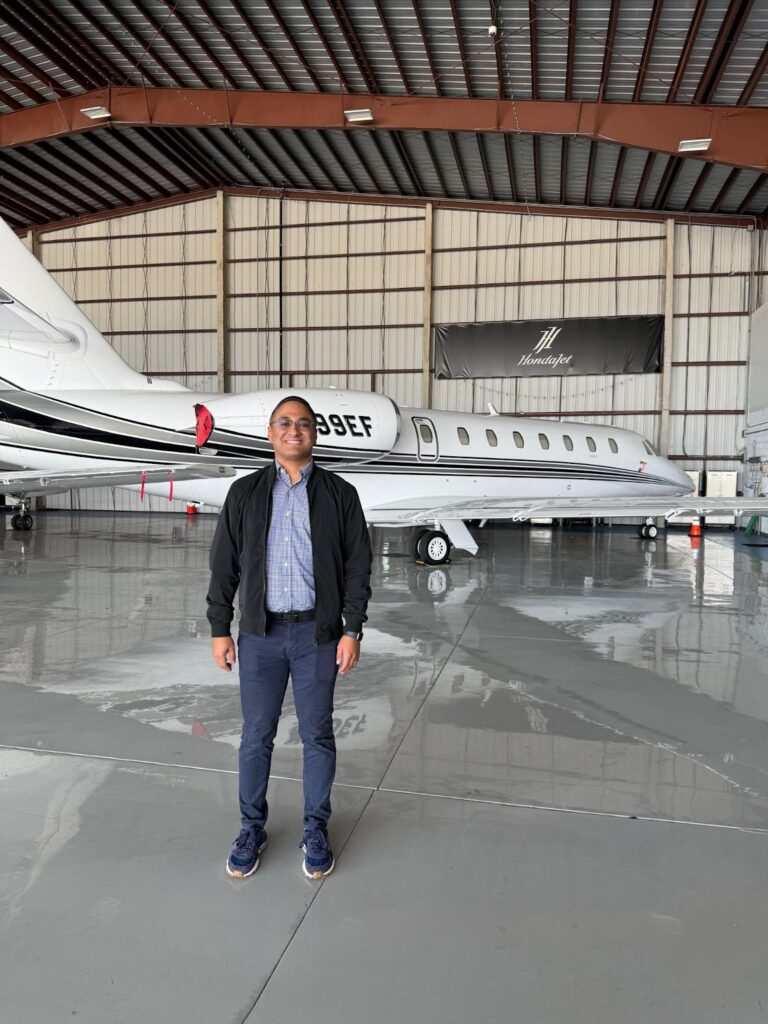When most people think of aircraft safety, they picture state-of-the-art avionics, redundant hydraulics, and precision-milled turbine blades. Captain Carlos Eduardo Rodriguez Martinez, however, sees something more subtle—and far more powerful—at work behind every trouble-free flight: the human beings who maintain the machine. In a newly published, peer-reviewed paper titled “Evaluating the Impact of Human Factors on Aircraft Maintenance Errors: A Risk-Based Analysis Framework for Business Aviation,” Rodriguez takes direct aim at the under-explored interplay between technicians, technology, and organizational culture.
The paper—featured in Volume 13, Issue 2 (2024) of the World Journal of Advanced Engineering Technology and Sciences—does more than catalogue cockpit-class horror stories. It proposes a decision-ready model that operators can insert, turnkey fashion, into existing Safety Management Systems (SMS). That clarity of purpose is one reason WJAETS awarded Rodriguez “Best Paper” honors for the issue, lauding the work’s “contribution to the quality of the journal” and its practical value to a global readership of engineers, auditors, and regulators.
A New Lens on a Persistent Problem
Human error remains the leading causal factor in maintenance-related aviation events—an uncomfortable truth that persists even as digital checklists, condition-based monitoring, and predictive analytics proliferate. Business aviation is particularly vulnerable: small teams, variable mission profiles, and time-critical turnarounds create more “holes” in James Reason’s famed Swiss-cheese model of accident causation.
Rodriguez’s study spells out how and why:
- Fatigue & Shift Work – The 24/7 nature of on-demand charter often forces technicians into circadian misalignment, dulling cognitive acuity when it is needed most.
- Training Gaps – Boutique operators do not always have the scale to support full-spectrum recurrent instruction on emerging composite materials, advanced avionics, or software patches.
- Communication Breakdowns – Hand-offs between crews may be informal, undocumented, or siloed, incubating latent faults that blossom days later on a revenue flight.
While these themes echo decades of safety research, Rodriguez breaks new ground by weaving them into a Risk-Based Human-Factors Framework tailored to business-aviation realities. In short, he shifts the question from “What went wrong?” to “Where will it go wrong next, unless we intervene?”
Inside the Three-Tier Framework
- Just-Culture Foundation – Blame-free reporting is not merely encouraged, it is formalized via policy, training, and leadership modeling. Rodriguez cites peer-reviewed data showing a 300 percent increase in voluntary error reports when punitive fear is removed from the equation.
- Technology Integration – Digital checklists, wearable fatigue sensors, and AI-driven diagnostic aids form the framework’s “smart tools” layer, giving frontline personnel environmental nudges and data-validated guidance in real time.
- Adaptive Training Ecosystem – Gone are one-size-fits-all recurrent courses. Rodriguez advocates for modular curricula that link individual competencies (ergonomics, troubleshooting new sensor suites, crew resource communication) to specific risk indices uncovered by the Just-Culture data stream.
Together, those tiers create a living feedback loop in which every minor hiccup becomes an input for organizational learning, rather than an anecdote that dies in a logbook.
Projected Impact: Dollars, Data, and Duty of Care
- Cost Mitigation – Rodriguez’s Monte-Carlo modeling shows that, for a fleet of ten mid-size jets, a single maintenance-induced AOG (Aircraft on Ground) event can eclipse the year-long outlay required to implement the entire framework.
- Regulatory Alignment – As ICAO pushes for universal SMS adoption across all sectors, smaller operators will soon need a documented human-factors methodology. Rodriguez supplies one that can be audited without adding bureaucratic drag.
- Workforce Resilience – By coupling fatigue data to scheduling tools, operators can anticipate cognitive degradation in AMTs (Aviation Maintenance Technicians) before it manifests as error—an approach in line with trends toward predictive healthcare in occupational settings.
Peer Validation and Industry Recognition
The Best Paper certificate conferred by the World Journal of Advanced Engineering Technology and Services (WJAETS) is more than a wall-plaque moment. Past winners have seen their methodologies migrate into ICAO circulars, EASA advisory material, and OEM service bulletins. If that trajectory holds, Rodriguez’s framework could become a de-facto benchmark for Part 135 and corporate flight departments worldwide—especially as insurers begin asking operators to document how human-factors risks are quantified and mitigated.
Beyond Academia: The Builder Behind the Blueprint
Rodriguez’s credibility doesn’t end at the laboratory door. As co-founder of Aero Servicios AC Corp and Volark LLC, he routinely translates theory into daily operations—from integrating Sustainable Aviation Fuel supply chains to sourcing critical parts for AOG recovery. That cross-functional perspective infuses the paper with a pragmatism academics sometimes lack: each recommendation is costed, each RACI (Responsible, Accountable, Consulted, Informed) matrix plotted, each KPI articulated.
Looking Ahead
Rodriguez is already in talks with two charter networks to pilot the framework’s digital-checklist component, using data captured via tablet to populate a real-time dashboard that color-codes error probability. If the trials mirror model predictions—cutting maintenance incident rates by up to 40 percent over 18 months—the business-aviation community may soon embrace a new gold standard for human-factors stewardship.
For an industry where a single overlooked cotter pin can ground millions in revenue and risk lives aloft, the research could not be timelier. As Rodriguez himself writes in the paper’s conclusion: “Safety cultures are measured not by the absence of error, but by the relentless pursuit of catching it sooner.” His award-winning framework appears poised to do exactly that.
Learn more about Carlos Eduardo Rodriguez Martinez on LinkedIn.

